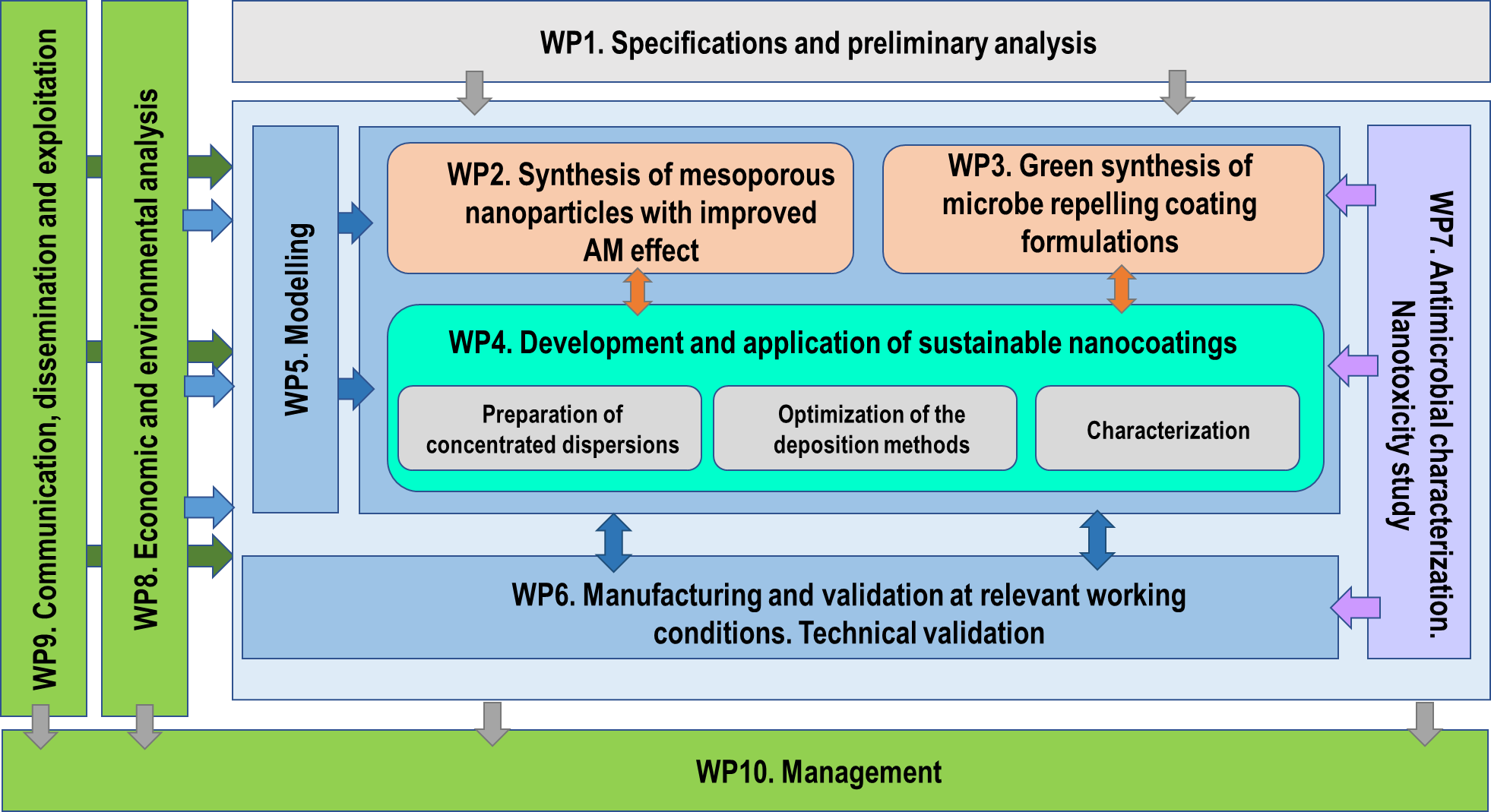Activities
The work plan for RELIANCE is structured around 10 Work Packages (WP). The structure of the technical work packages represents the sequence of activities within the project and their interrelatedness. Starting from the definition of the specifications and requirements for the innovative nanocoatings and applicability criteria, passing through the actual development of the additives to their integration in the coating formulations to modelling
the design, and finally their validation in the respective application sectors. The above operations are supported by the communication and dissemination, and project management packages throughout the entire lifetime of the project.
The objectives of this work package are as follows:
To define product specifications and functionality related to the industrial test cases
To define the specifications for nanoparticles designing.
To define the specifications of coatings formulations to achieve the targeted functionalities.
To define application process specifications for deposition of the antimicrobial.
WP2 works on the development and functionalization at laboratory scale (100 g) of the two ranges of Cu-SMIN, and to up-scale of the production to obtain 1 kg of the two ranges of Cu-SMIN.
The objectives of WP3 are synthesis of inorganic sol-gel formulations based on the fluorine free reactants and water as a solvent as well as synthesis of water borne organic formulations based on partially biobased polyurethanes (bioPU).
Preparation of Cu-SMIN concentrated dispersions for an easy distributio and incorporation in nanocoatings.
Nanostructurin of inorganic sol-gel coatings, application by spraying. Optimization of the process.
Nanostructuring of organic coatings, application by digital printer. Optimization of the process.
Direct deposition of AM nanocoating by cold atmospheric plasma. Optimization of the process.
The main objective of WP5 is to use molecular modelling to replace empirically designed formulations against microorganisms with rational de novo ones based on a fundamental understanding of the molecular mechanisms driving antimicrobial activity. Molecular Dynamics (MD) simulations with thoroughly validated, state-of-the-art force fields will be utilized to provide direct and fast assessment of antimicrobial surface activity by studying interactions of bacteria, viruses and fungi with the active ingredients of the new nanocoating formulations, with emphasis on the role of nano surfaces and their morphology.
WP6 comprises the following activities:Manufacturing of demonstrator products for three industrial applications: (i) automotive, (ii) textile and (iii) home appliance, and applying sustainable antimicrobialnanocoatings developed and tested in WP4.
Testing to validate the properties following the specific regulations defined in WP1.
Validate antimicrobial and mechanical performance after being submitted to aging or wearing tests, representing real use of nanocoatings.
WP7 has two main objectives:
Analyze AM properties of nanocoatings and durability of AM action, by testing antibacterial, antifungal and antiviral properties before and after wear or ageing tests (e.g. abrasion tests or washing tests, rinsing, …).
Consider possible toxicity of Cu-SMIN nanoparticles and nanocoatings for health and environment.
Objectives:
Define and implement the communication, dissemination and
exploitation strategy and activities.
Integrate the stakeholders’ engagement.
Link RELIANCE with existing networks, projects and initiatives to promote knowledge transfer.
Objectives:Define and implement the communication, dissemination and exploitation strategy and activities.
Integrate the stakeholders’ engagement.
Link RELIANCE with existing networks, projects and initiatives to promote knowledge transfer.
The objective of WP10 is to ensure efficient administration in accordance with the EC guidelines and requirements,as well as communication among the consortium. Other tasks include coordination
optimisation as well as Risk and Data management.
Work Plan


Views and opinions expressed are however those of the author(s) only and do not necessarily reflect those of the European Union or the European Health and Digital Executive Agency (HADEA). Neither the European Union nor the granting authority can be held responsible for them.
© All Rights Reserved 2025 | Reliance-HE
Designed and Developed by Europroject

